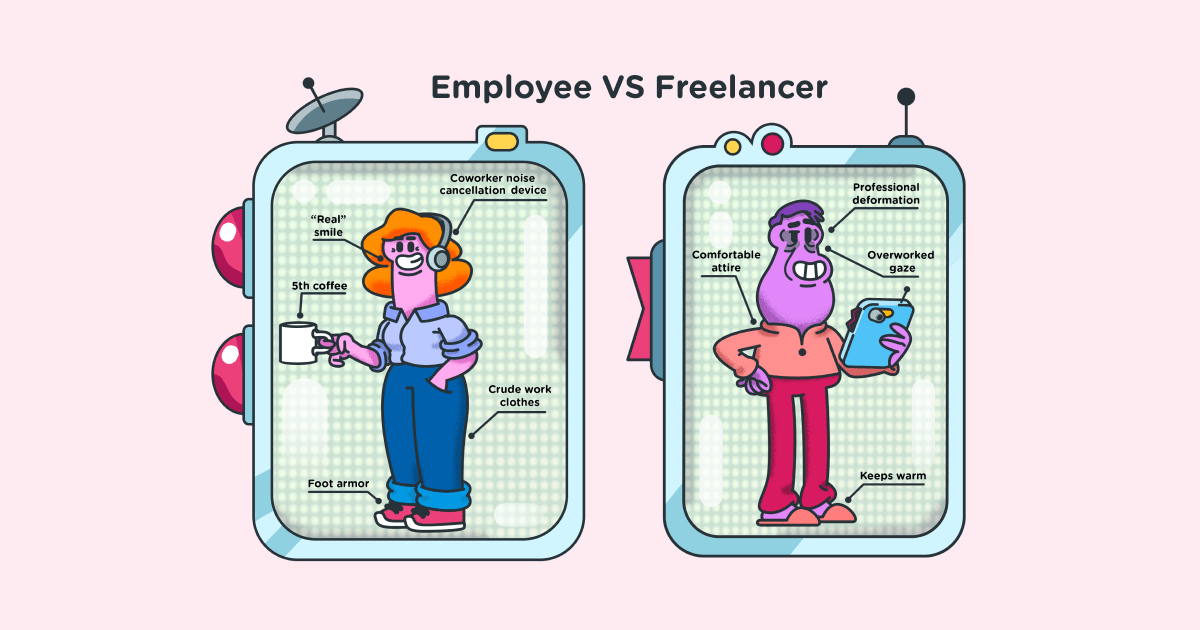How to measure employee productivity in the knowledge economy
Last updated on: December 22, 2021
Workers who think for a living. This is how we can describe “knowledge workers.” In general, these employees apply their knowledge to produce products or provide services. Peter Drucker, who invented the term “knowledge workers,” said that these employees would be the most valuable part of a 21st-century organization due to their creativity and productivity.
Speaking of the latter, how you measure productivity in the knowledge and in the manual work industry shouldn’t include the same rules. In this article, we’ll shed light on how to evaluate the productivity of knowledge workers, by covering:
- the differences between measuring productivity in the manual work and knowledge economy,
- steps to take, and
- steps to avoid when measuring the productivity of knowledge workers.

Table of Contents
Measuring employee productivity in the manual vs. knowledge work
Since the 1900s the economy has shifted from industry to knowledge economy. Nowadays, nearly half of the overall workforce consists of knowledge employees, such as programmers, lawyers, accountants, and others. Apart from knowledge work, there’s manual work.
When it comes to manual or physical work, the focus is placed on quantity. Of course, quality is important, too, but workers need to accomplish minimal quality requirements.
How can you tell if a manual employee is productive? Well, there’s a simple productivity formula.

Productivity formula
With an output, we express the number of items created or services provided, while an input defines a number of units, which can be work hours, labor, or money. For example, a baker makes ten loaves of bread (output) in two hours (input). So, he bakes five loaves of bread per hour.
But, can you apply this rule in knowledge work? Not really. For instance, a doctor manages to treat three patients in an hour. Now, it’s not easy to determine whether this doctor is productive because each patient has his own problem, which demands particular treatment. Thus, a doctor may spend more or less time with a patient.
That’s why in knowledge work, both quantity and quality need to be taken into account. Therefore, you can’t evaluate the productivity of a knowledge worker by looking only at the quantity of work. In the example of a doctor, the quantity can be the number of patients that a doctor had an appointment with. Aside from quantity, you have to consider quality factors as well. In this case, quality means that a doctor listens to a patient carefully, asks any relevant questions, suggests a proper treatment or medications.
Apart from quality and quantity, there’s another difference between manual and knowledge work, the one regarding tasks. How would you define your tasks in both types of work? Peter Drucker realized that knowledge work is quite complex, so he proposed asking a simple question: “What is the task?”
So, speaking of manual work, you can name your tasks with ease. For example, a hairdresser’s tasks include cutting, coloring, washing, and styling hair.
But, what about knowledge work? Defining assignments in the knowledge economy can be quite challenging because this type of work usually includes so many various tasks. Let’s take an architect as an example. Her job is to develop building designs, create and present project proposals, define timelines, supervise construction processes, meet with clients, and many more tasks.
Moreover, some assignments bring more value than others. For instance, some knowledge workers spend many hours per week on meetings instead of doing their core tasks, such as writing a project proposal. At the end of the day, the core tasks are the ones that count.
Thus, with so many diverse tasks on workers’ plates, managers may find it hard to evaluate their knowledge employees.
Steps to take when measuring the productivity of knowledge workers
We’ve seen that estimating employee productivity in the knowledge economy can be demanding. However, it is possible. If you’re a manager or a team leader, here are some steps you can take when evaluating the productivity of your workers.
Setting clear metrics
To be able to measure the productivity of your employees, you’ll need to set a baseline system to measure against. This means that for each position, there should be clear work outputs. Setting these expectations will be beneficial for your employees, too. They’ll know exactly what they should be doing to improve productivity and performance.
For example, in a social media team, the metrics can include the number of posts published per week or the number of direct messages a worker managed to reply to during a week.
Thanks to the metrics, you’ll be able to compare worker’s results with these standards to find out whether a worker has been productive. Plus, all employees will be evaluated equally.
Establishing a goal-setting system
Apart from defining specific metrics, you should also have a system of goal-setting. Goals play a crucial role in every team because they help workers stay on task, keep track of their progress, and be more productive. It’s vital that team goals are aligned with company goals.
How can team leaders set such a system? By making a checklist that employees can use when working on particular assignments. Therefore, managers can evaluate the productivity of their workers by analyzing employee progress. Managers can see progress when employees are accomplishing each goal on the list.
This will give workers a clearer understanding of how they should organize their days to reach team goals. For example, a checklist for a content writer can cover these goals:
- doing research,
- crafting a blog outline,
- writing a blog post, and
- proofreading a blog post before sending it to a manager or a client.
Besides, leaders can hold daily or weekly meetings, during which an entire team can talk about upcoming goals. You can also employ some standardized systems, like Objectives and Key Results (OKR).
Reviewing the completion of tasks
Once you set metrics and goals within the team, employees will know what assignments they need to do and when they have to complete them. Besides, task descriptions and deadlines need to be transparent. That way, all workers will hold themselves accountable for the assignments on their list. Therefore, managers can review whether an employee was productive by reviewing completed tasks throughout a day or a week.
You and your team can use project management tools for this purpose. In addition, managers can ask for daily or weekly reports from their workers. These reports should incorporate all assignments that a worker completed during the set period.
It’s crucial to point out here that managers need to consider both the quality and quantity of assignments when reviewing them.
Encouraging time tracking
Tracking time is an invaluable way to find out more about your daily activities, such as how much time you spend on various tasks during the day. If you encourage your employees to monitor their time when working, they’ll learn more about their productivity patterns. Then, if needed, they’ll be able to reorganize their days to improve output. More importantly, as their manager, reviewing their logged hours will help you evaluate employee productivity.
For instance, you and your team can record time by using an automatic time tracker like Clockify. The software monitors all active programs on your computer and all websites you visit. By the end of the day, you’ll have an overview that contains all logged time frames that are longer than 10 minutes. In other words, you’ll have your own productivity timeline.
Productivity timelines are visible only to a person who tracks time. And, as you can see here, you can choose what activities you’d like to add as a time entry. Then, by selecting particular activities, employees can create a timesheet they can later share with a supervisor or a manager. Next, managers can evaluate employee productivity by reviewing timesheets.
In general, time tracking helps you identify wasted time, too. Some examples of wasted time are when you’re not doing your priority tasks but dealing with less important ones. Or when you attend meetings you’re not needed in. As you can imagine, assignments like these can hinder your productivity.
Steps to avoid when measuring the productivity of knowledge workers
On the other hand, here are some actions you should avoid when evaluating employees in the knowledge economy.
Micromanaging
In order to check how productive your workers are, you’re constantly asking them for updates or trying to control every move they make. Put yourself in their shoes: would you be able to perform your job and finish all tasks on time in situations like this? Probably not. Dealing with such distractions can surely decrease employee productivity.
So, as their leader, avoid micromanaging your team. Let your employees work on their own. After all, if you’ve already defined standards and goals within your team, workers have everything they need to do their job. This way, you show your employees that you trust them, and encouraging honesty is important, too.
Overlooking personal factors
When measuring employee productivity, remember to take into account personal factors, too. Sometimes, workers experience issues and stress that are not work-related, which can result in lower productivity levels.
Now, if you have an honest relationship with your employees, they will probably let you know about their problems at home. In that case, you should let your worker spend a bit more time on a task or have someone else on the team help him complete an assignment.
Conclusion
Evaluating the productivity of knowledge employees means considering both the quality and quantity of their work. Since knowledge workers have numerous various tasks they deal with every day, this makes evaluations a lot harder. So, what should managers do to measure employee productivity?
The vital steps team leaders should take are establishing clear metrics and goals within a team. Therefore, workers will know what is expected of them, and managers will have standards to measure employee productivity against. The next logical step will be to review whether employees have completed their tasks. In addition, leaders can foster time tracking because this routine helps workers learn about their productivity habits.
At the same time, managers need to avoid some actions when reviewing the productivity of their employees. Micromanaging workers to find out how productive they are will only make employees less effective. Furthermore, leaders need to understand that a reason for a worker’s productivity drops sometimes lies in personal issues.
✉️ If you’re a manager or a team leader, how do you measure the productivity of your employees? Send your answers, suggestions, and comments to blogfeedback@clockify.me and we may include them in this or future posts.




